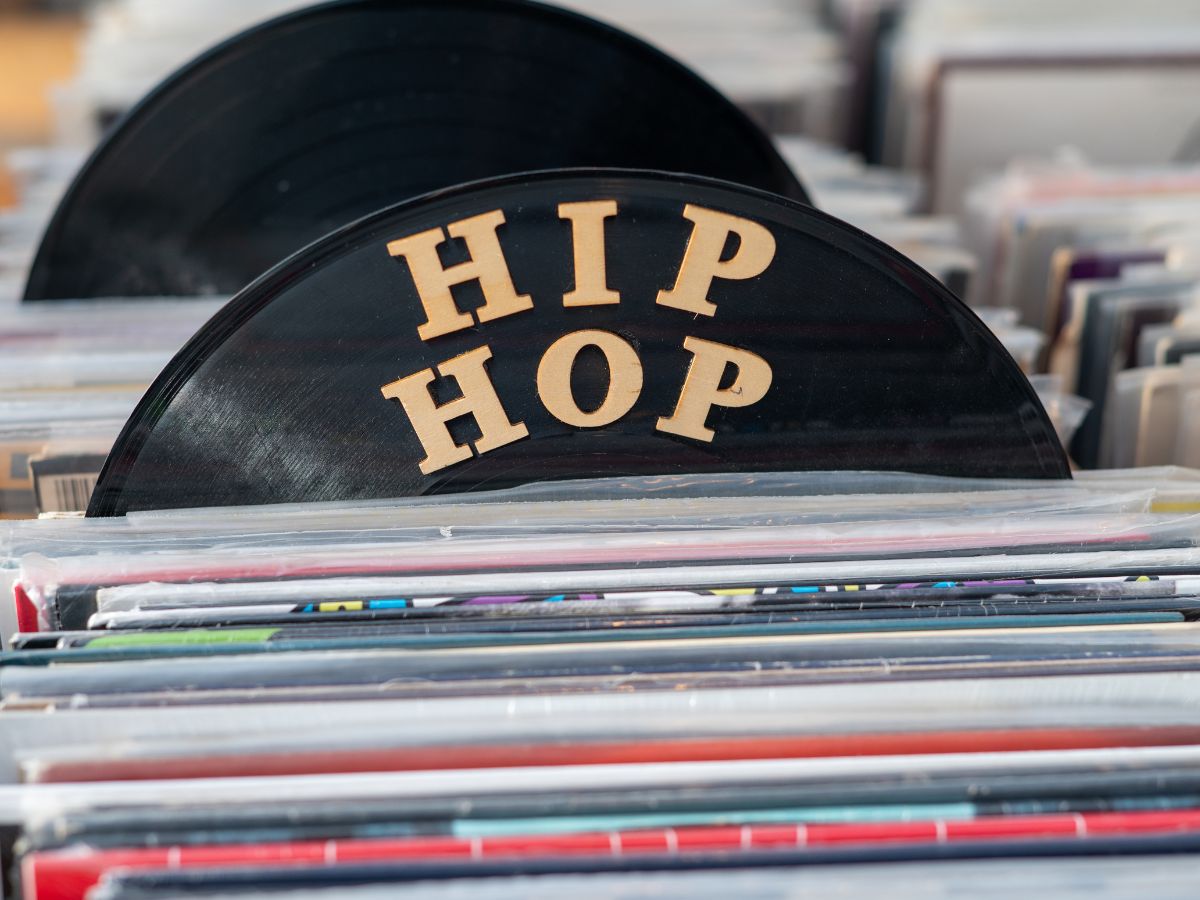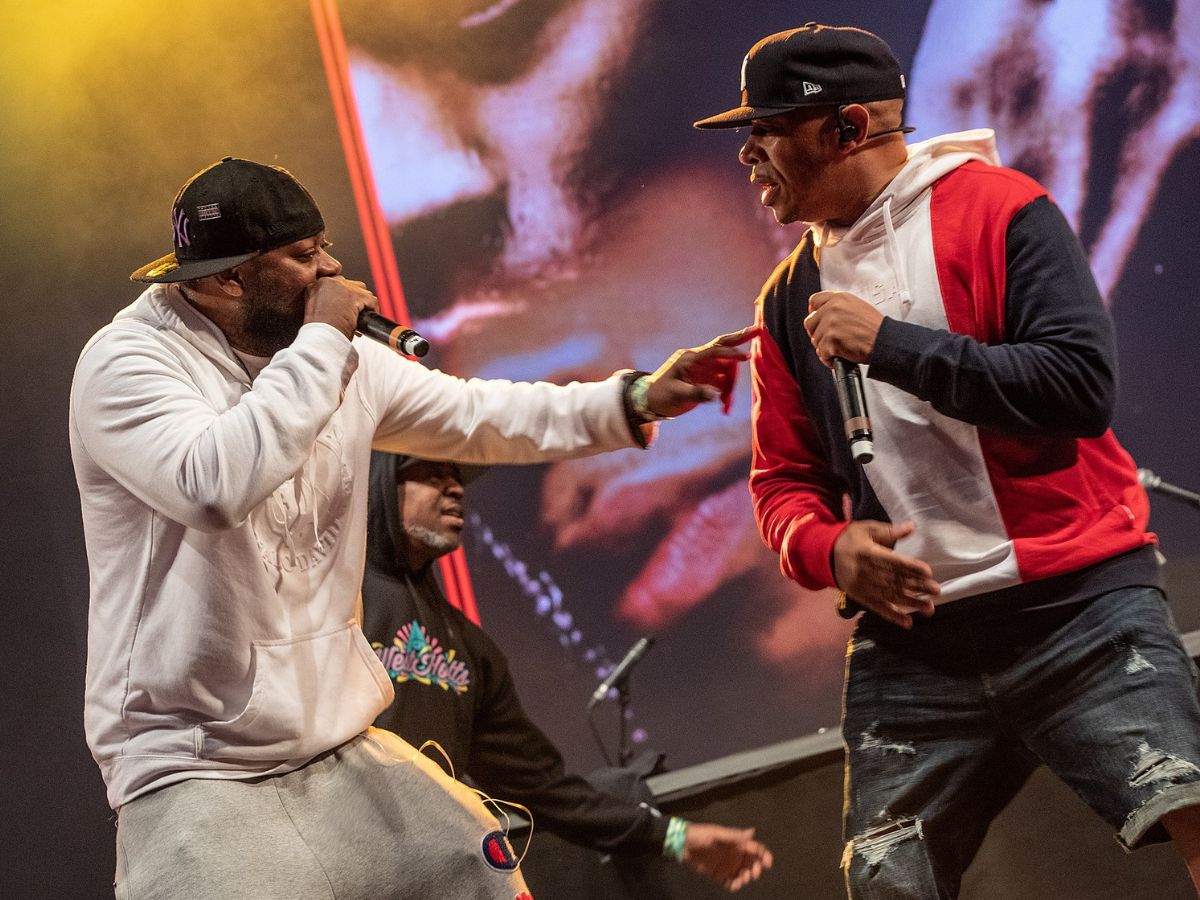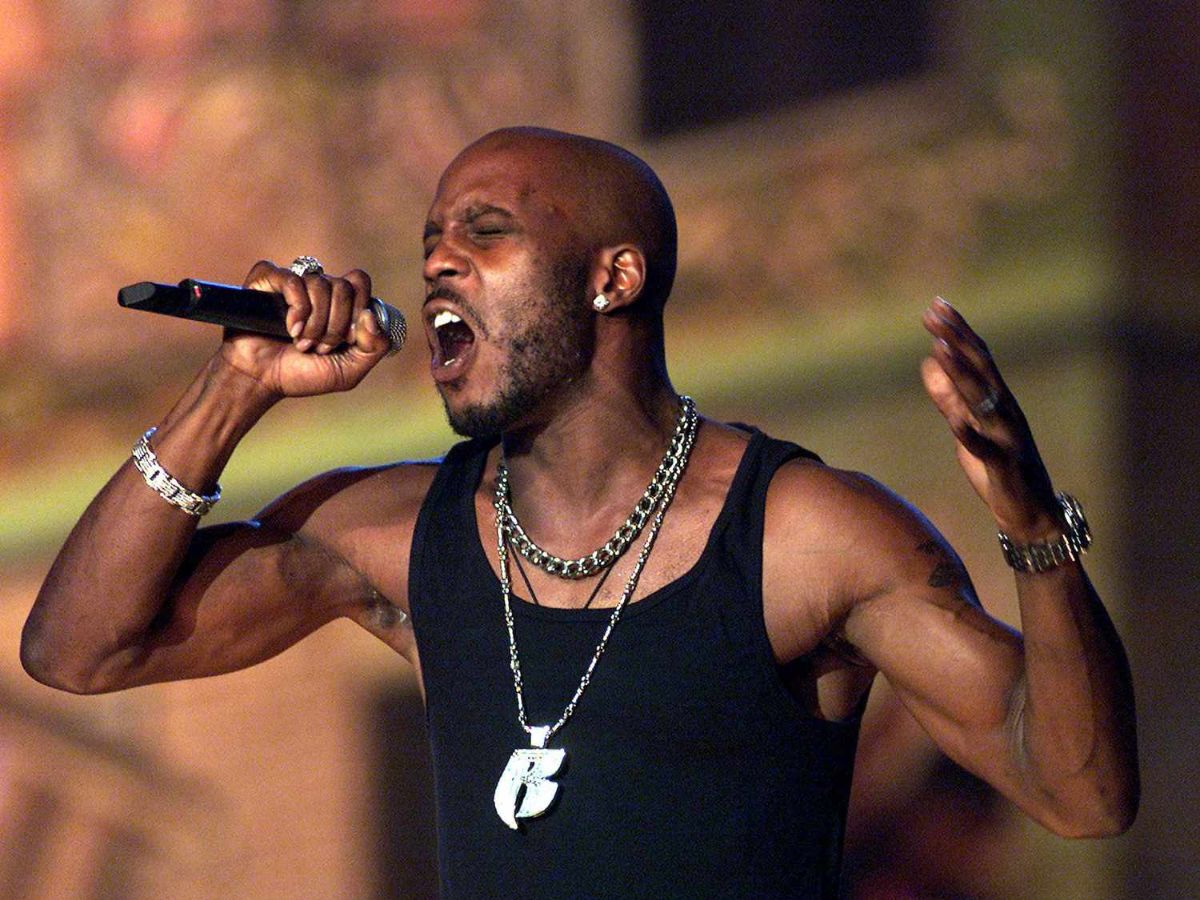

Hip Hop
What Does Hip Hop Stands For
Modified: January 22, 2024
Discover the meaning behind Hip Hop and its cultural significance. Explore the origins, music, dance, and fashion of this influential genre.
(Many of the links in this article redirect to a specific reviewed product. Your purchase of these products through affiliate links helps to generate commission for AudioLover.com, at no extra cost. Learn more)
Table of Contents
Introduction
Hip Hop, a cultural and artistic movement that emerged in the 1970s in the Bronx, New York, has evolved into a global phenomenon and a dominant force in popular culture. Rooted in African-American and Latino communities, Hip Hop has become a powerful form of self-expression, a platform for social commentary, and a vehicle for celebrating diversity.
What began as a local underground movement has now transcended borders, connecting people across continents through its music, fashion, dance, and overall aesthetic. Hip Hop has given a voice to marginalized communities, shedding light on their struggles, dreams, and aspirations, while also providing a soundtrack for parties, clubs, and street life.
With its origins deeply entrenched in African oral traditions, Hip Hop has developed into a multifaceted art form that encompasses various elements, including rap, DJing, graffiti art, and breakdancing. Each element contributes to the vibrant and dynamic nature of Hip Hop, making it an incredibly influential cultural force.
In this article, we will explore the origins and evolution of Hip Hop, delve into its different elements, examine its cultural impact, and analyze its influence on mainstream pop culture. From its early beginnings in the South Bronx to its global dominance, Hip Hop has evolved and continues to shape the world we live in today.
Join us as we dive into the world of Hip Hop, where rhythm, poetry, and style collide to create an art form that has captured the hearts and minds of millions around the world.
Origins of Hip Hop
Hip Hop has its roots in the vibrant cultural landscape of the South Bronx during the 1970s. It was a time of economic decline, social unrest, and high crime rates, but amidst the chaos, something revolutionary was brewing.
The term “Hip Hop” was coined by legendary DJ and producer, DJ Kool Herc. He pioneered the use of two turntables and a mixer to extend the instrumental breaks of popular songs, creating a continuous flow of music that kept the crowd energized and dancing. These extended breaks became the foundation for early Hip Hop music and laid the groundwork for the rise of MCs (master of ceremonies).
MCs began to rhyme and rap over the beats, providing a vocal element to the music. They would engage in friendly competition, known as “battles,” where they would showcase their lyrical skills and wit. This element of Hip Hop allowed individuals to express themselves, share their stories, and address social issues within their communities.
Alongside the rise of DJs and MCs, graffiti artists played a significant role in the development of Hip Hop culture. They used city walls, subway trains, and various public spaces as their canvas to showcase their artistic skills. Graffiti served as a visual representation of the voice and creativity within the Hip Hop community, showcasing vibrant colors, intricate designs, and powerful messages.
Another fundamental element of Hip Hop was breakdancing, also known as b-boying or b-girling. Influenced by African and Latin dance styles, breakdancing showcased acrobatic moves, freezes, and intricate footwork. It became a way for dancers to express themselves physically and showcase their creativity and skill.
Together, these elements of Hip Hop captured the hearts of the local community, creating a cultural movement that would go on to shape the world. What started as a small-scale phenomenon in the South Bronx quickly spread to other boroughs of New York City and eventually gained international recognition.
The origins of Hip Hop represent a rich history of resilience, creativity, and innovation. It was born out of a necessity for self-expression and served as a voice for young people seeking refuge from the harsh realities of their environment. The cultural movement they created evolved into a global phenomenon that continues to inspire and empower individuals from all walks of life.
Elements of Hip Hop
Hip Hop is a multi-faceted artistic movement that comprises several key elements, each contributing to its unique and dynamic nature. These elements include rap, DJing, graffiti art, and breakdancing, all of which come together to form the rich tapestry of Hip Hop culture.
Rap, also known as MCing or emceeing, is perhaps the most well-known element of Hip Hop. It involves the art of rhythmically speaking or rhyming over beats, often addressing social issues, personal experiences, or simply showcasing lyrical skill. Rappers use their voices as instruments to convey their thoughts and emotions, creating powerful and thought-provoking messages.
DJing, a critical element of Hip Hop, involves manipulating and blending recorded music to create seamless mixes and transitions. DJs often perform live, using turntables, mixers, and other equipment to create unique sounds and keep the crowd engaged. They are responsible for selecting and blending beats, creating the perfect backdrop for rappers and dancers.
Graffiti art, also known as aerosol art, is a visual form of expression deeply ingrained in the Hip Hop culture. Graffiti artists use spray cans to create elaborate and vibrant artwork on walls, trains, and other surfaces. It is a form of self-expression, often depicting intricate designs, messages, and social commentary. Graffiti serves as a visual representation of the creativity and rebellious spirit within the Hip Hop community.
Breakdancing, or b-boying/b-girling, is a highly energetic and acrobatic form of dance that emerged alongside Hip Hop. It involves a combination of intricate footwork, freezes, spins, and power moves, all executed with style and precision. Breakdancers use their bodies to tell stories, express emotions, and engage in battles, showcasing their individuality and skill within the dance form.
These elements, rap, DJing, graffiti art, and breakdancing, are interconnected and reinforce one another, shaping the overall Hip Hop culture. They provide individuals with avenues for self-expression, allowing them to share stories, challenge societal norms, and celebrate their unique identities.
It is important to note that these elements have evolved over time, incorporating new techniques and styles while retaining the essence of Hip Hop. As the culture has spread across the globe, different regions and communities have added their own influences and interpretations, further enriching the diversity and creativity within Hip Hop.
Together, these elements form the foundation of Hip Hop, providing a platform for artistic expression, cultural commentary, and celebration of individuality. They reflect the spirit of innovation, resilience, and creativity that continues to define Hip Hop as a global cultural movement.
Music and Lyrics in Hip Hop
One of the defining characteristics of Hip Hop is its unique blend of music and lyrics. From the early days of DJ’s spinning records to the modern production techniques, Hip Hop music has evolved while keeping its roots intact.
The music in Hip Hop is often characterized by its heavy reliance on sampled beats and loops. DJs originally used vinyl records to create the instrumental tracks for MCs. They would find and isolate short snippets of music from various genres, including funk, soul, and R&B, and use them as the foundation for the songs. This practice, known as sampling, gave birth to the iconic sound of Hip Hop, with its distinctive grooves and rhythms.
Over time, sampling has become more sophisticated, with producers using digital technology to manipulate and rework the samples. This allows for greater creativity and experimentation in creating unique and original beats. The production process often involves layering multiple samples, adding drum patterns, and incorporating synthesized sounds to create a complex and dynamic musical backdrop.
The lyrics in Hip Hop are a crucial element that sets it apart from other genres. MCs, also known as rappers, are the wordsmiths of Hip Hop, using their rhymes and wordplay to convey messages, tell stories, and captivate audiences. The lyrics often explore personal experiences, social issues, and cultural commentary.
Rappers use their lyrics as a platform to express their thoughts, emotions, and perspectives on various topics. Some MCs focus on storytelling, painting vivid pictures with their words and taking listeners on a journey. Others use their lyrics to address social injustices, systemic issues, and the realities of their communities.
The lyrical content can range from introspective and personal reflections to sharp critiques of society and political commentary. Hip Hop lyrics have the power to provoke thought, challenge norms, and give voice to those who are often marginalized or overlooked.
Another notable aspect of Hip Hop lyrics is the emphasis on wordplay, clever metaphors, and intricate rhyme schemes. Rappers use these techniques to showcase their lyrical prowess and create a memorable and engaging listening experience.
Collaboration between producers and rappers is also a significant aspect of Hip Hop. Producers work closely with MCs to create the right musical backdrop that complements and enhances the lyrical content. This collaboration is crucial in shaping the overall sound and impact of the music.
Whether it’s the infectious beats or the powerful lyrics, the music and lyrics in Hip Hop come together to form a dynamic and captivating art form. It is a constant evolution of sound, with new trends, styles, and voices emerging continually.
Through its music and lyrics, Hip Hop has become a voice for the voiceless, a medium for self-expression, and a platform for social and cultural commentary.
Cultural Impact of Hip Hop
Hip Hop has had a profound and far-reaching impact on culture, influencing various aspects of society on a global scale. From music and fashion to language and social activism, Hip Hop has left an indelible mark on the world.
One of the most significant cultural impacts of Hip Hop is its role in giving voice to marginalized communities. Hip Hop emerged from the streets of the South Bronx as a form of creative expression for African-American and Latino communities who were often overlooked or oppressed by mainstream society. It provided an outlet for these communities to share their stories, struggles, and aspirations in a way that resonated with people around the world.
Through its raw and honest lyrics, Hip Hop exposed the realities of life in urban areas, shedding light on issues such as poverty, violence, and systemic injustices. It became a platform for activism, with artists using their music and influence to advocate for social change and raise awareness about important issues.
Hip Hop has also played a crucial role in shaping fashion and style. From iconic tracksuits and oversized attire in the 80s and 90s to the current trend of streetwear and athleisure, Hip Hop has consistently influenced the fashion industry. Artists like Run-DMC, Notorious B.I.G., and Kanye West have become fashion icons, paving the way for the fusion of streetwear and high fashion.
Additionally, the language and slang of Hip Hop have permeated mainstream culture. Phrases like “fresh,” “dope,” and “fly” originated in Hip Hop and have become part of everyday lexicon. Moreover, Hip Hop has been instrumental in shaping the evolution of poetry and storytelling, with its unique rhyme schemes and lyrical techniques influencing contemporary literature and spoken word.
The impact of Hip Hop also extends to the realm of visual arts. Graffiti, a fundamental component of Hip Hop culture, has been recognized as a legitimate art form, with artists like Jean-Michel Basquiat achieving global acclaim. Street art, influenced by the rebellious and creative spirit of graffiti, has gained recognition as a powerful form of artistic expression.
Hip Hop has also transcended geographical boundaries, becoming a global phenomenon. It has connected people from diverse cultures and backgrounds, fostering cross-cultural collaborations and exchanges. Artists from different countries and languages incorporate elements of Hip Hop into their music, creating a fusion of sounds and styles that celebrate cultural diversity.
Through its music, fashion, language, and art, Hip Hop has proven to be a powerful force in shaping popular culture. It continues to inspire and influence new generations, providing a platform for representation, creativity, and social change. As Hip Hop evolves, so does its cultural impact, making it a dynamic and ever-evolving movement.
Social and Political Commentary in Hip Hop
One of the most significant aspects of Hip Hop is its role as a platform for social and political commentary. From its earliest days, Hip Hop artists have used their music and lyrics to address a wide range of social issues and advocate for justice and change.
Hip Hop emerged during a time of socio-economic struggle in marginalized communities, and its music became a powerful tool for expressing the frustrations and realities of life in those neighborhoods. Hip Hop artists began to address topics such as poverty, racism, police brutality, and inequality, shedding light on the systemic challenges faced by communities of color.
Through their lyrics, Hip Hop artists provide a voice for those who are silenced and marginalized. They tackle complex issues such as systemic racism, mass incarceration, and the impact of socio-economic disparities. Their protests and calls for change have been instrumental in raising awareness and igniting conversations about these important topics.
Hip Hop has also played a pivotal role in political activism. Artists like Public Enemy, N.W.A, and Kendrick Lamar have used their music to critique government policies, advocate for social justice, and amplify the voices of oppressed communities. Their songs have become anthems of resistance and empowerment.
In addition to addressing social issues, Hip Hop artists have also been vocal about political movements and elections. They encourage their fans to be politically engaged and use their voting power to effect change. The influence of Hip Hop on political engagement can be seen in events like Rock the Vote, which sought to mobilize young voters through music and culture.
Furthermore, Hip Hop has been a catalyst for cultural and racial pride. It has provided a platform for artists to celebrate their heritage, challenge stereotypes, and assert their identity. Artists like Queen Latifah, Tupac Shakur, and J. Cole have used their music to uplift their communities, promote positive self-image, and encourage unity.
While Hip Hop has faced criticism for the portrayal of violence, misogyny, and materialism in certain songs, it is essential to recognize the diversity within the genre. Many artists use their platform to promote positivity, growth, and empowerment, highlighting the multifaceted nature of Hip Hop’s social and political commentary.
Ultimately, Hip Hop serves as a mirror of society, reflecting its struggles, triumphs, and persistent inequalities. It provides a space for artists and listeners to engage in critical conversations, challenge the status quo, and envision a more just and equitable world.
Hip Hop Fashion and Style
Hip Hop has long been synonymous with its distinctive and influential fashion and style. From its early roots in the South Bronx to its global impact, Hip Hop has revolutionized fashion trends and pushed boundaries like no other movement.
One of the iconic elements of Hip Hop fashion is the emphasis on self-expression and individuality. Hip Hop artists have always used their style choices to reflect their unique personalities and attitudes. Baggy jeans, oversized t-shirts, and hoodies became staples of the Hip Hop wardrobe, with artists like RUN DMC and LL Cool J popularizing the “fresh” and relaxed aesthetic.
Another significant aspect of Hip Hop fashion is the fusion of streetwear and high fashion. Hip Hop artists have not only influenced mainstream fashion with their casual and urban looks but have also embraced luxury brands and incorporated them into their style. From Jay-Z and Kanye West to A$AP Rocky and Pharrell Williams, Hip Hop artists have become fashion icons, collaborating with big-name designers and elevating Hip Hop fashion to new heights.
Accessories play a crucial role in Hip Hop fashion, adding flair and personality to outfits. From flashy jewelry, including oversized chains and pendants, to designer watches and sneakers, artists use accessories to make bold statements and showcase their success. These accessories have become status symbols and a way for artists to demonstrate their style and wealth.
Furthermore, the influence of Hip Hop has extended beyond clothing and accessories, with hairstyles playing a significant role in the overall style. Braids, cornrows, and intricate patterns have become popular, with artists like Snoop Dogg and Lil’ Kim setting trends and inspiring countless individuals to experiment with their hair.
Hip Hop fashion also encompasses the celebration of cultural heritage and individuality. Artists often incorporate elements of their heritage into their style, incorporating African prints, traditional patterns, and symbols that carry deep significance. This fusion of cultural aesthetics further contributes to the diversity and richness of Hip Hop fashion.
Additionally, the impact of Hip Hop fashion can be seen in the rise of brands and designers influenced by the movement. From streetwear labels like Supreme and Off-White to luxury brands collaborating with Hip Hop artists, the influence of Hip Hop on the fashion industry is undeniable.
Through its daring and boundary-pushing fashion choices, Hip Hop has become a global trendsetter, inspiring individuals from all walks of life to embrace their unique style and express themselves authentically. It has reshaped the fashion industry, breaking traditional norms and championing individuality and creativity.
Hip Hop Dance and Movement
Hip Hop dance and movement are integral components of the culture, contributing to its vibrancy and energy. Rooted in urban communities, Hip Hop dance emerged as a form of self-expression and a way to tell stories through movement.
One of the foundational elements of Hip Hop dance is breakdancing, also known as b-boying or b-girling. It evolved in the 1970s in the Bronx, with dancers incorporating acrobatic moves, spins, freezes, and intricate footwork. Breakdancing became a form of street performance and a way for dancers to showcase their athleticism, creativity, and individual style.
Beyond breakdancing, Hip Hop dance encompasses a wide range of styles, including popping, locking, krumping, and more. These styles are characterized by their dynamic, rhythmic movements, isolation of body parts, and emphasis on musicality.
Popping is a technique that involves quickly contracting and releasing muscles to create a popping or hitting effect. Locking, on the other hand, focuses on precise movements, sharp stops, and exaggerated poses. Krumping is a highly energetic and expressive style characterized by intense body movements and facial expressions.
Hip Hop choreography draws inspiration from these various styles, incorporating elements of breaking, popping, locking, and more, to create visually captivating and engaging dance routines. Choreographers infuse their creativity and unique interpretations of the music into their routines, making each performance a personal statement.
Unlike traditional dance forms, Hip Hop dance encourages freestyle and improvisation. Dancers often engage in battles, where they compete against each other, showcasing their skills, creativity, and ability to adapt to the music and challenge their opponents. These battles are not about defeating the opponent but rather celebrating the art of dance and pushing each other to new heights.
Hip Hop dance has gained global recognition and has been popularized through music videos, performances, and TV shows like “America’s Best Dance Crew” and “So You Think You Can Dance.” The dance community has also embraced social media platforms, allowing dancers from all over the world to connect, share their talents, and inspire each other.
Beyond the dance floor, Hip Hop movement has influenced other dance genres, music videos, and even advertising campaigns. Its energy, creativity, and sense of community have made it a powerful force in popular culture.
Through its various styles and emphasis on individuality, Hip Hop dance has become a form of expression, connecting individuals and communities around the world. It continues to evolve, incorporating new movements, techniques, and cultural influences, ensuring that Hip Hop dance remains a dynamic and influential element of the culture.
Hip Hop’s Influence on Pop Culture
Hip Hop has had a significant and enduring impact on pop culture, shaping music, fashion, language, and entertainment in profound ways. What started as a grassroots movement in the Bronx has now become a global phenomenon that permeates every aspect of popular culture.
One of the most evident forms of Hip Hop’s influence is in the music industry. Hip Hop has not only become its own dominant genre but has also influenced and merged with other genres, creating a wide range of innovative and hybrid sounds. Artists like Drake, Beyoncé, and Kendrick Lamar have broken boundaries, blending elements of Hip Hop with R&B, pop, and other styles, resulting in chart-topping hits and a global fanbase.
Hip Hop’s impact is not limited to music alone. Fashion has been greatly influenced by Hip Hop, with artists becoming style icons and setting trends that reverberate throughout the industry. Streetwear, such as sneakers, hoodies, and oversized clothes, has become mainstream, with luxury brands collaborating with Hip Hop artists to create highly sought-after collections.
The influence of Hip Hop extends to visual arts as well. Graffiti, a key element of Hip Hop culture, has gained recognition as a legitimate art form. Street artists inspired by Hip Hop have risen to prominence, incorporating the ethos of the movement into their work, capturing the attention of galleries and museums around the world.
Moreover, Hip Hop has affected language and communication. Its slang, idioms, and expressions have become a part of everyday vernacular, not only within the Hip Hop community but also in mainstream culture. Phrases like “yo,” “dope,” and “lit” originated in Hip Hop but have now entered into common usage, illustrating the significant impact of the genre on language.
In the realm of entertainment, Hip Hop has permeated film, television, and dance. Movies like “Straight Outta Compton” and “8 Mile” have chronicled the lives of Hip Hop legends, while TV shows featuring Hip Hop culture, such as “Empire” and “Power,” have captivated audiences worldwide. Hip Hop’s influence on dance can be seen in various choreography styles, as reality shows like “So You Think You Can Dance” celebrate its dynamic and energetic movements.
Furthermore, Hip Hop has become a driving force for social and cultural movements. Artists have used their platforms to raise awareness about social justice issues, advocate for equality, and empower marginalized communities. Hip Hop has become a voice for the voiceless, challenging societal norms and demanding change.
Hip Hop’s influence on pop culture can be attributed to its authenticity, creativity, and ability to connect with people from diverse backgrounds. Its power lies in its ability to reflect the experiences, struggles, and aspirations of communities worldwide.
As Hip Hop continues to evolve, it will undoubtedly leave a lasting impact on pop culture, shaping the way we listen to music, consume media, dress, and even how we communicate. Its legacy as a transformative and influential force is firmly ingrained in the fabric of society.
Commercialization and Mainstream Success of Hip Hop
The commercialization and mainstream success of Hip Hop have been instrumental in shaping the global cultural landscape. What began as a grassroots movement in the Bronx has now become a multi-billion dollar industry that dominates popular music, fashion, and entertainment.
As Hip Hop gained recognition and popularity in the late 1970s and 1980s, it began to attract the attention of major record labels. This led to the commercialization of the genre, with artists signing lucrative deals and their music reaching a broader audience. Record labels capitalized on the growing demand for Hip Hop, marketing it to a mainstream audience and expanding its reach beyond the traditional Hip Hop communities.
The 1990s and early 2000s marked a significant turning point for Hip Hop, as artists like Jay-Z, Tupac Shakur, and The Notorious B.I.G. achieved mainstream success, selling millions of records and dominating the charts. Their success paved the way for other Hip Hop artists, breaking down barriers and expanding the possibilities for commercial viability within the genre.
With the rise of the internet and digital platforms, Hip Hop became even more accessible and influential. Artists, independent of major record labels, began to utilize online platforms to promote their music, connect with fans, and achieve mainstream success on their own terms. This democratization of the industry allowed for a diversity of voices, styles, and perspectives within Hip Hop.
The commercialization of Hip Hop has also had a significant impact on fashion. Brands recognized the market potential and influence of Hip Hop culture, leading to collaborations between artists and fashion houses. Hip Hop artists became brand ambassadors, endorsing and influencing fashion trends, ultimately blurring the lines between streetwear and high fashion. This fusion has resulted in the elevation of Hip Hop fashion and its mainstream acceptance.
The commercial success of Hip Hop has had its drawbacks as well. The emphasis on commercial viability has led to a homogenization of the genre, with artists often conforming to formulas and trends to achieve mainstream success. This has resulted in a shift away from the raw and socially conscious roots of Hip Hop, with a greater focus on materialism and superficiality.
Despite these challenges, the commercialization of Hip Hop has also created opportunities for artists to accumulate wealth and build influential empires beyond music. From fashion and branding to endorsements and investments, successful Hip Hop artists have leveraged their platforms to become entrepreneurs and moguls in their own right.
Overall, the commercialization and mainstream success of Hip Hop have brought the culture to new heights, exposing it to a broader audience and allowing artists to achieve unprecedented levels of fame and success. While it has faced scrutiny and criticism for straying from its original roots, the impact of commercialized Hip Hop on the global entertainment and fashion industries remains undeniable.
Conclusion
Hip Hop, born out of the streets of the South Bronx in the 1970s, has evolved into a cultural and artistic movement that has left an indelible mark on the world. From its origins in African-American and Latino communities, Hip Hop has transcended boundaries, connecting people from diverse backgrounds through its music, fashion, dance, and overall aesthetic.
With its roots deeply entrenched in the struggles and triumphs of marginalized communities, Hip Hop has become a powerful platform for self-expression, social commentary, and celebration of diversity. Its music and lyrics have given a voice to the voiceless, shedding light on social issues, challenging societal norms, and advocating for change.
The elements of Hip Hop, including rap, DJing, graffiti art, and breakdancing, have shaped the cultural landscape, inspiring generations of artists, musicians, dancers, and fashion enthusiasts. The influence of Hip Hop can be seen in the fusion of styles and sounds, the emergence of streetwear as a global fashion trend, and the adoption of its language and slang into everyday vernacular.
Hip Hop’s impact on pop culture cannot be understated. It has transformed the music industry, breaking down barriers and creating new possibilities for artistic expression. It has reshaped fashion, blurring the lines between streetwear and high fashion, and influencing the way people dress around the world.
Furthermore, Hip Hop has become a powerful force for social change, raising awareness about systemic injustices, and empowering individuals to speak out against oppression. It has provided a platform for underrepresented voices, fostering a sense of community and resilience.
While the commercialization of Hip Hop has brought both opportunities and challenges, its mainstream success has allowed for greater visibility and reach. It has opened doors for artists to amass wealth, expand their influence, and create lasting legacies across various industries.
As Hip Hop continues to evolve, it remains a vibrant, dynamic, and influential force in popular culture. It reinforces the power of artistic expression, challenges societal norms, and celebrates the richness of diversity.
So, let us continue to embrace Hip Hop’s spirit of creativity, innovation, and social consciousness. Let us celebrate its immense contributions, and honor the voices and stories that have paved the way for this incredible cultural movement that continues to inspire and shape the world we live in.











